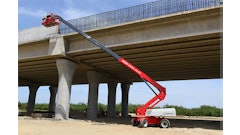So many rental business owners think that "if they provide good service, their customers will keep coming back and business will be great. Well, I've got news for them. Good service only goes so far, and it's not going far enough these days."
Those are the words of C. Dean Sisson, an image consultant specializing in showroom design. He says that in order to survive in today's marketplace, a business needs to create an identity; a positive image that will entice today's consumers to do business there. It starts with having the right attitude.
"A business owner's perspective on what he does for a living can make a big difference in the image his store portrays," Sisson says. "He really needs the attitude that he's solving a customer's problems, not just renting that customer a piece of equipment."
Brands shape your image
An important component of solving your customers' problems, Sisson points out, is having quality name brands that they recognize. If a rental business carries quality brands that are recognized by consumers, the consumer is more likely to view that business in a positive light.
It's equally important for the manufacturer to have a solid dealer network selling and servicing its products.
"It's a partnership that must be created and based on mutual respect," Sisson says. "I emphasize the word ‘partnership' because so many times I see dealers trying to do anything and everything the manufacturers tell them. But dealers can't forget to demand respect for themselves, too. Without respect from his manufacturers, a dealer will never create that strong identity for his dealership that is so needed in today's marketplace. For the most part, manufacturers nurture those dealers that are doing things right and are creating positive images for their dealerships."
One mistake Sisson says some businesses make is taking on the wrong brands. He says many rental businesses carry the name brands recognized by today's customers, but are trying to compete with the big-box stores by carrying the same brands they do. That can be a mistake, according to Sisson.
He says a good way a business owner can differentiate himself is by carrying more upscale brands customers won't find at big boxes. That's becoming harder to do as more and more manufacturers are putting product on the shelves of the mass merchants. If a rental business does carry a brand found at the mass merchant, he has to clearly communicate the fact that he only carries the more upscale models.
Image building starts early on
Image is often created before the customer ever steps foot into your store. For example, a guy rents a piece of outdoor power equipment from your business. His neighbor sees him using it. The neighbor asks where he got it and the guy tells his neighbor about your business. That word-of-mouth is a powerful image-shaper.
"The rental business has to remember that he's creating an image with every customer who comes into the store," Sisson says. "He's creating it based on the satisfaction of each customer as each customer leaves the store. And each customer will surely communicate that image to other potential customers in the future."
In this word-of-mouth scenario, you have very little control over how your image is portrayed; aside from taking good care of your existing customers to help ensure favorable word of mouth. You do have control over:
"A customer calls you saying he saw an ad in the paper and is wondering what your hours are; here's a prime opportunity to create a good first impression," Sisson points out. "If it's busy and you're short and snippy with the customer, you're making a bad first impression, inevitably creating a negative image. And that negative image will stick until you change it. So be careful about the tone you use on the phone. It may seem like nothing, but it can make a big difference in whether or not that caller becomes a customer."
The most important time to remember to be professional, Sisson says, is when you're rushed, tired and have a lot on your mind. You don't want the caller to know this, so you need to be particularly careful in how you talk to him. Convey a definite confidence, having a firm but responsive voice. Friendly voice inflection is also important. Have a smile in the voice at all times.
Your storefront conveys an image
After that initial phone call, the next opportunity to reinforce your image is when the customer pulls up to your store. You can either build on the positive image you created on the phone, or mess it up. If your parking lot is laid out poorly, your storefront is unattractive with poor signage and color, and the area in front of the building is not kept clean, a negative image is portrayed. If that's the case, it's going to be tough to change the image that customer has of you.
Showroom: the nitty gritty
"If you've created a positive image to this point and have gotten the customer to visit your store, you can't let them down now," Sisson says. Doing whatever possible to make sure the customer is given prompt attention goes without saying. But if your employees are busy helping other customers, you need an environment that will encourage the customer who's waiting for help to hang around and browse for a little while.
"All the elements of showroom design come into play here: the way the product is displayed, signage, color schemes, and things like lighting and temperature," Sisson explains.
"While the customer is browsing, your showroom has to be communicating certain things. This is over here, that's over there. We have this brand and that brand. This machine rents for this much, and so on. Make it easy for your customers."

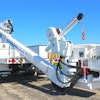

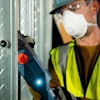




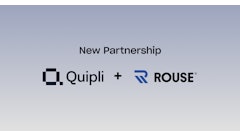



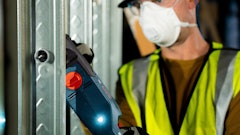

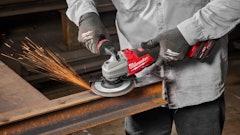

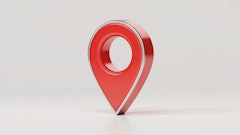

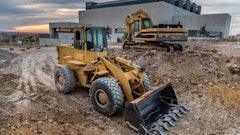
![Building Angled Sm Edit 6050b8d213f1b[1]](https://img.forconstructionpros.com/mindful/acbm/workspaces/default/uploads/2025/09/building-angled-sm-edit6050b8d213f1b1.Ygq5aAos3b.png?ar=16%3A9&auto=format%2Ccompress&crop=focalpoint&fit=crop&fp-x=0.53&fp-y=0.23&fp-z=2&h=135&q=70&w=240)
